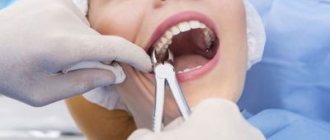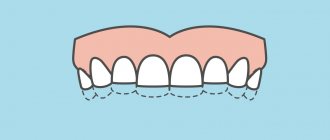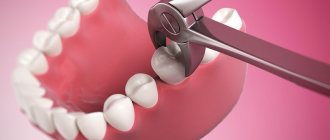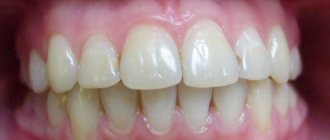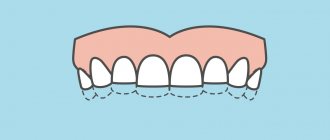What is regurgitation?
Regurgitation in infants is considered to be the spontaneous release of a small amount of just eaten food (milk or formula) into the baby’s mouth from the stomach.
Content:
1. Types of regurgitation |
00:56 (in video) 2. Physiological causes of regurgitation | 01:40 (in video) 3. Functional causes of regurgitation | 02:43 (in video) 4. Permissible frequency of regurgitation 05:13 (in video) 5. Until what age can regurgitation continue | 05:47 (in video) 6. Is it necessary to feed the baby after spitting up | 06:23 (in video) 7. Actions when spitting up | 07:11 (in video) 8. Congenital pathologies of the gastrointestinal tract, as a cause of regurgitation 9. Actions to prevent regurgitation Online consultation with a pediatrician (Breastfeeding Specialist)
Online consultation
During the consultation, you will be able to voice your problem, the doctor will clarify the situation, interpret the tests, answer your questions and give the necessary recommendations.
Types of regurgitation in newborns
There are 3 types of regurgitation:
- belching - the release of air captured by the baby when eating, as a rule, a small volume of milk or formula comes out;
- regurgitation - the food received and the air along with it come out very abundantly. In time, this occurs simultaneously with the end of the meal or after a short period of time. Children in the first 5 months of life are more often susceptible to this phenomenon. Does not cause anxiety or crying in the child, appetite does not disappear;
- vomiting is similar to regurgitation, but there are a number of features. The child is capricious, cries, becomes sleepy, lethargic. There is a complete loss of appetite and reluctance to eat.
3 month old baby drooling
drooling at 3 months
In the section Raising children to the question The child is 3 months old, drooling and sucking his fist asked by the author SG, the best answer is that we are still drooling like a stream))) and they also began to drool early, somewhere around three months, and the first tooth appeared at only five and a half I don’t allow my hand to be chewed, I exchange it for a toy, but we didn’t take a pacifier, and even now I can only stick it on the street so that I don’t swallow cold air
Hello! Here is a selection of topics with answers to your question: The baby is 3 months old, drooling and sucking his fist
Reply from ***SKARLETT*** Even if nothing is too early. it's like that for everyone
Answer from Araucaria-2 I was constantly drooling; my first tooth appeared only at 5 months. The pacifier is worth trying; of course, it’s not a fact that he will want it. And my friend’s baby had her first one when she was almost a year old, and she was also drooling constantly. So they climb there, teeth, but to
Answer from Nadezhda Kiyanitsina, give me a better domestic rubber toy.
The answer from Zhanna Kuznetsova scratches her gums and is quick. Good development!
Answer from Lyubov Vasina You buy him a special silicone ring at the pharmacy, kids love to suck on it and rub their gums.
Answer from Elena Give him something to scratch his gums, he will like it.
Answer from Katyushka Kukharenko This happens to almost all children at this age. It’s unlikely that it’s related to teeth, we are predicted to have teeth from the age of 4 months - in the end, none. and we are 9 months old! img src= //otvet.imgsmail.ru/download/530e56afd283395268f5c36a12676039_61964_1999166.png gt;. /a
Answer from Pupsik why is it early, it’s already possible, but the fist still tastes better
Answer from Yatyan: Well, they still suck their fists in utero. And what about your teeth? Mine already had 2 teeth at 3 months.
Answer from Oksana)) No, this is not for teething. Buy a soft rubber toy and let him chew. We are already 5 months old. and there is still no tooth, but the fist is pulled into the mouth.
Answer from Maria Zyablikova This is before the teeth.
Answer from Elena Khaidukova Children are sometimes born with teeth, so it’s time to get ready, soon they will have a bite.
Answer from Nikolay Kolomytsev, maybe he’s just hungry and wants to eat, and you’re all toys and toys))))))))))) hunger is not a toy, so you can eat your fist)))
Answer from Lenka-foam I have been putting my hands in my mouth since about 2.5 months, and from 3 months I have been drooling. This is not a matter of teeth, this is a period. I give her teethers, but not because of the teeth, but because she needs to put everything in her mouth
Reply from I love you!))) We have been drooling since we were 3 months old too! Now 5, no teeth! chews everything, a pacifier and a fist, and whatever comes to hand!))))
Answer from Yovetlan give anything (a pacifier, a toy, a raw carrot - he won’t bite it, but scratch his gum))). but don’t let him suck your fist or finger—then you’ll have to wean yourself off.
Answer from Olga Vinnikova We are also 3 months old, drooling, sucking her fist, biting her breast very painfully, crying until she lets her bite her finger!
Answer from OKSANA, when I was 3 months old, 2 teeth erupted, I buy Babydent drops, they help us, don’t buy only teethers with liquid, we bought an ordinary Russian one, like a tree, there are also fish, they are soft and can be held well by the handle
Hello! Here are more topics with the answers you need:
Physiological causes of regurgitation
- short esophagus or ball-shaped esophagus;
- the esophagus becomes wider in the upper part (has the shape of a funnel);
- the esophagus is narrowed (this process is normal, according to physiology);
- The gastric sphincter is underdeveloped. This is a temporary phenomenon (due to age).
The muscular corset of the stomach is still weak, and the mucous membranes are quite sensitive. That is why, when food enters the stomach, its bottom begins to produce contractile movements. As the pressure level increases, food makes its way back into the oral cavity from the esophagus.
Functional causes of regurgitation
Due to the physiological immaturity of the sphincter located between the stomach and esophagus. After food products pass through it, it may not close. Food can easily pass through the esophagus into the oral cavity. In children of the first year of life, this sphincter is poorly developed and may not work well.
- the structure of the gastrointestinal tract (a child’s esophagus differs from the structure of an adult). When the baby lies down, it is easier for food to move back into the esophagus and ultimately into the oral cavity.
- active movements after eating (turns, games).
- overeating (applies to all types of feeding).
- food is not according to the regime. This applies to "artificial babies" who are often fed as if they were breastfed, i.e. on demand. The mixture takes much longer to digest. Eating food not according to a schedule, regime, but at will, on demand, creates excess pressure on the bottom of the stomach, preventing food from being digested normally, so regurgitation may occur.
- the mixture is chosen incorrectly;
- swallowing air during feeding (baby sucks quickly);
- incorrectly attached to the breast, the bottle is positioned incorrectly, read more about breastfeeding positions here;
- with a sudden change of position after eating (swaddling, massage, games).
- due to the resulting pressure on the abdominal cavity - a narrow diaper, a tight diaper, colic, gas, constipation.
- congenital defects of the gastrointestinal tract, diseases associated with neurology, intestinal obstruction.
- poisoning
- diseases and injuries: hyperthermia, head injury, acute respiratory viral infection, pylorospasm, pyloric stenosis
- Pylorospasm and pyloric stenosis.
What is pylorospasm? The pyloric section of the stomach is the section where the stomach passes into the duodenum. Muscle spasm in this area is called pylorospasm. In such a situation, food does not pass into the stomach or passes through with difficulty, which causes regurgitation.What is pyloric stenosis? This is a phenomenon where food does not pass or passes with difficulty from the stomach to the intestinal area. This condition requires surgical treatment.
Helping your baby with excessive salivation
A continuous stream of drool in an infant causes discomfort to both the baby and the parents. The result of excessive drooling can be not only constantly wet clothes and a bad mood, but also irritation in the chin and chest area. A rash like this, which appears as a result of endlessly flowing drool, causes far from pleasant sensations and additional inconvenience. Plus, a large volume of saliva secreted can provoke a cough in the baby.
Using teethers and special gels for gums will relieve itching in the mouth and soothe the baby.
It is possible to minimize all the ensuing consequences through proper care, which includes:
Using bibs. They have been used for a very long time and, due to the presence of a liner made of waterproof materials, they perfectly protect the baby’s chest from constant exposure to moisture. It wouldn’t hurt to include them in the list of things that need to be purchased before the baby is born. Buying a pacifier. In the modern world, many mothers are trying to give up pacifiers. However, it can be very useful, because it makes it much easier for the baby to swallow drool. Purchasing teethers. Such inventions are aimed at reducing itching of the gums. At the same time, they perfectly absorb excess drool.
It is important to regularly put them in the wash and rinse them thoroughly. Using creams containing vitamins A and E. Lubricating irritated areas with them will reduce discomfort. Placing baby on tummy
Since newborn babies lie on their backs almost all the time, drool accumulates, as it is difficult for it to flow out of the mouth. Placing the baby on your stomach is an excellent solution to this problem. Use of cooling and anesthetic gels. They will relieve itching in the gums, which in turn will lead to a decrease in irritation, and, consequently, a decrease in saliva production.
Despite all the inconveniences associated with excessive salivation, in most cases it is completely normal. All children go through this and parents just need to be patient and, if possible, alleviate the condition of the baby.
If you are still concerned about your baby's continuous drooling, which is accompanied by other unpleasant symptoms, consult your pediatrician
Acceptable frequency of regurgitation.
As a rule, they indicate a frequency of 6-8 times a day in small portions; you can also find data on regurgitation 2-5 times a day and a volume of ⅔ tablespoons. If the number of regurgitations increases, fever, and vomiting appear, contact your pediatrician. If weakness is added, this is a reason to call an ambulance.
Especially close attention is required when spitting up like a fountain. You need to offer the child water and carry it in a column. If the regurgitation was a one-time occurrence, there is no need to worry.
Do I need to feed my baby after spitting up?
- If the baby has eaten a long time ago, the milk/formula has almost been digested; if the body position changes, the baby may still burp. This is not a reason for additional feeding.
- If regurgitation occurs after feeding, this is a sign of overeating. It’s also not worth feeding.
- If the baby spits up profusely, this is a reason to discuss this issue with the pediatrician. We also don’t supplement feeding.
- If regurgitation is minimal, then you can feed as usual.
Taking into account the physiology of children, it is not possible to find a clear connection between feedings and regurgitation.
Increased drooling after 2 years
If excessive drooling in a child under 2 years of age is considered normal, then older children require the help of a specialist who will tell you whether this phenomenon is temporary or requires drug treatment. Usually in such cases, children are prescribed drugs with anticholinergic effects (“Atropine”, “Spazmolitin”, etc.).
And don’t be scared when you see your baby drooling profusely. Usually this is simply a physiological feature that absolutely all children encounter at a certain age. Very little time will pass, the baby will start teething, he will learn to swallow saliva and the situation will return to normal. Mom can only wait out this moment, helping her baby cope with profuse drooling.
- Jumpers for children
- How to feed a child correctly?
- The child sweats in his sleep
Actions to take when spitting up
Sometimes spitting up is easier to prevent than to treat. This does not always apply to cases where regurgitation is not physiological in nature and requires specialist supervision and possible surgical intervention.
So, simple tips to help minimize regurgitation:
- The first time the baby is put to the breast. Try to master this skill while still in the maternity hospital, turning to medical staff for help. You can also seek advice from a breastfeeding specialist. A baby who is properly attached to the breast will swallow less air during feeding, which will reduce the risk of regurgitation and stomach problems in the form of excessive gas formation.
- Get your baby used to lying on his tummy on a hard surface before feeding. This is a kind of massage that also has a beneficial effect on the baby’s stomach, reducing regurgitation and preventing colic and bloating.
- Before feeding, you can do a light massage of the abdomen in a clockwise direction, and light exercises.
- Try not to make your baby scream from hunger, as he will definitely swallow excess air, which will become a likely cause of regurgitation and just a bad mood. If this happens, try to calm the baby down first, and then start feeding.
- If feeding formula from a bottle, make sure it is full. The nipple of the bottle should be filled with milk, not air. Particular attention should be paid to the nipple, namely the hole in the nipple. It must be selected according to the age of the child. The inscription on the box of the bottle will help with this, indicating what age the nipple is designed for. The hole in the nipple regulates the flow of fluid and avoids choking during feeding.
- If during the feeding process the baby stops or begins to arch and cry, you can stop feeding and help the baby burp out excess air. To do this, take him in your arms, position him facing you so that the baby's arms and his head are on your shoulder. The baby will burp and perhaps return to eating again.
- Don't overfeed your baby. It is worth increasing the number of feedings, but reducing the portion. When bottle-feeding, the doctor will calculate the rate of food intake at a time and the total amount per day, based on the age and weight of the baby.
Many pediatricians, gastroenterologists, and surgeons take into account the recommendations of the working group of the European Society of Gastroenterology and Nutrition:
- position treatment
- use of therapeutic nutrition
- medication use
- surgery
- Treatment by position. During feeding, it is important to ensure that the baby is in a position in which the head and upper body are raised above the rest of the body. For this purpose, you can use a pillow or diaper. After feeding, hold the baby in a column to allow excess air to escape. Do not swaddle your baby tightly so as not to squeeze the stomach. After feeding, it is recommended to place the baby on his stomach or right side. But WHO recommends putting your baby to sleep only on his back.
- Medical nutrition. This means more frequent feedings with smaller portions. For children who are bottle-fed, the doctor may recommend the use of a therapeutic antirefluxor formula (AR is its designation on the package). These mixtures have an increased proportion of casein relative to whey proteins, so they are thicker, which prevents their release through the esophagus. Also, these types of foods are often enriched with thickeners, for example, starch or gum - a substance that, under the influence of the acid of the stomach contents, becomes thicker. This substance has the peculiarity of not being dissolved by enzymes, which allows it to remain thick in the stomach longer. It also promotes the active movement of food into the intestines from the stomach.
For more information about artificial feeding, read our article “Artificial feeding: feeding rules and types of formulas.”If the child is breastfed, then, on the recommendation of a doctor, the mixture can be added to the diet and enter the child’s body before milk. The duration of use of this mixture is about 3 months.
- Drug treatment. It is prescribed by a doctor, if the previously indicated methods have not brought results, then it is possible to treat with medications that can significantly improve the contraction of the intestinal walls.
- Surgical intervention. This is an extreme measure when the main cause of regurgitation is pathology.
Now more specifically about each:
Symptoms that require consultation with a pediatrician
A healthy child with parents and its proper development is a great happiness. Strong salivation, if it is not accompanied by other symptoms of abnormalities, requires only a timely change of clothes and bibs. Unfortunately, sometimes an immediate consultation with a local pediatrician is necessary. We list the symptoms in a baby that should alert parents and require immediate consultation with a pediatrician:
- The drooling continues and is accompanied by difficulty breathing through the nose and increased body temperature. It is possible that the baby caught the virus - its etiology needs to be determined.
- The child's eyes turned red, his nose was stuffy, he began to cough and sneeze frequently. These symptoms may indicate an allergic reaction. At two to three months and up to a year, the development of allergies in a baby can be triggered by pollen from flowering indoor plants, dust, detergents, baby hygiene products and pets.
- Thickening of the tongue and its constant falling out of the mouth with excessive salivation. This may indicate a dysfunction of the endocrine system.
- Thick, cloudy saliva may indicate the presence of helminths. The pediatrician will prescribe appropriate tests, the results of which will help refute or confirm suspicions.
- If by 3 months the baby cannot hold his head up, his fontanelle is pulsating, he does not get enough sleep and constantly cries, then he should be shown to a neurologist. Developmental pathologies cannot be excluded.
- Does your baby have excessive salivation accompanied by a runny nose and sneezing? Immediately call a pediatrician at home - these are symptoms of ARVI.
The child cannot yet independently tell where it hurts. You should carefully monitor the baby’s behavior and, at the slightest suspicion of a deviation from the norm, immediately inform your pediatrician.
Viscous and thick saliva may indicate the presence of helminths. If you notice discharge of questionable consistency and color in your toddler, he constantly bites his fists and sleeps poorly, it is better to show the baby to specialists.
Carefully observe your baby’s behavior and at the slightest suspicion of deviations, immediately notify your pediatrician.
Congenital pathologies of the gastrointestinal tract as a cause of regurgitation
- Hiatal hernia. This is a congenital defect expressed in the underdevelopment of the structures of the diaphragm. Regurgitation begins within a couple of weeks after birth, lasts a long time, occurs immediately after feeding, the baby stops gaining weight or even loses weight. To identify this diagnosis, an x-ray examination is performed.
- Relaxation of the cardia (or chalasia of the sphincter that separates the esophagus and stomach). If it is not completely closed, then milk is released unchanged from the stomach into the esophagus. This type of regurgitation appears in the first days after birth and can be severe, especially if the baby has not burped up air. The child is lethargic, sucks poorly, sleep is disturbed, and there is no weight gain. X-ray examination can confirm the diagnosis.
- short esophagus (congenital anomaly) - the stomach is located above the diaphragm due to the fact that the esophagus does not correspond to the size of the chest.
If a mother is alarmed by the baby’s regurgitation and at least one of these signs is present, this is a reason to consult a doctor immediately.
- the child spits up often and a lot;
- bile and blood are present;
- regurgitation began after six months or did not go away by this time;
- poor weight gain, lethargy, rare urination.
- restless behavior
- increase in body temperature,
- skin rashes.
The formation of a mechanism that prevents regurgitation begins in the last 3 months of the mother’s pregnancy and continues after the birth of the baby.
Reflux is a mechanism of regurgitation, antireflux is the opposite phenomenon.
The antireflux mechanism is a complex system that can be damaged by various factors. Often this damage is observed in premature babies or children with developmental delays, as well as during difficult pregnancy, cesarean section, difficult childbirth, hypoxia and increased intracranial pressure.
If these factors are present, in addition to regurgitation, the baby will have signs of a nervous system disorder: mild excitability or vice versa, the child will be very lethargic, sleep will be disturbed, there will be tremor of the arms and legs, the presence of hypertonicity and hypotonicity.
As a rule, to determine the cause of regurgitation and prescribe appropriate treatment, ultrasound, x-rays, and computed tomography of the abdominal cavity are used.
Preserving the health of the child is the main task of parents. If your baby’s behavior, sleep, or health have worsened and you are concerned, consult a doctor. Consulting a specialist will never be superfluous. There are a lot of reasons for regurgitation, as a rule, they are all due to physiology, but only mom and dad are able to notice in time that something is going wrong and correct the situation in time without harm to the health of the little person.
Whooping cough in children: from infants to adolescents
Whooping cough is one of the most serious and long-lasting infections, which is especially dangerous for children in the first year of life, and today there are cases of its development even in babies 2-3 months old.
The disease is severe, lasting up to 10 weeks or more, characterized by bouts of painful coughing that cannot be relieved by medications.
Today is the day whooping cough is no longer a rare infection. In 2022, according to Rosstat, children began to get whooping cough 2.3 times more often than in the previous year.
Over the past ten years, the incidence has been steadily increasing. And most of the patients are young children, children of the first three years and preschoolers, that is, those for whom the disease is most severe.
This increase in incidence is due to the fact that children are increasingly not given the DTP vaccine or do not receive a full course of vaccinations in the 1st–2nd year of life.
And almost none of the parents care about additionally vaccinating their children against whooping cough before going to school.
Whooping cough: what do we know about it?
Although cough is accompanied by many childhood diseases, whooping cough is special: 10–40 attacks of dry hacking cough per day exhaust both the child and the parents.
Episodes of coughing last from a few seconds to 2–3 minutes and lead to choking and vomiting. Coughing attacks end with a loud, high-pitched “cock crow.” This is the sound of a child frantically trying to breathe in air between repeated coughing attacks.
Repeated episodes of painful coughing are called “paroxysms,” which gives the condition another name called “paroxysmal cough.” Doctors themselves sometimes call whooping cough the “100-day cough,” which is due to its duration, which is about 6–8 weeks, and the intensity of the attacks gradually decreases.
No matter how painful and dangerous it can be, whooping cough, when diagnosed early, is treatable and can be prevented with a vaccine.
But in order to suspect whooping cough based on the first signs, you need to know that the child has been in contact with the patient and confirm the disease with test data - and this is not always easy.
Whooping cough is caused by the microbe Bordetella pertussis. They penetrate with particles of mucus, saliva and sputum when a sick child or adult sneezes or coughs into the mouth, throat and bronchi.
Bacteria penetrate the mucous membranes of the respiratory system, bind there to epithelial cells, and begin to produce cytotoxin, a special substance that affects the cilia of the ciliated epithelium that covers the respiratory tract. They help keep the airways clean, like a brush, clearing mucus and debris from the airways.
Cytoxin blocks their motor activity, and the child is forced to cough heavily, since the epithelium of the respiratory tract sends continuous signals that cleaning is needed. This leads to episodes of whooping cough.
Children can develop whooping cough if they are in close contact with infected adults or other babies. Bacteria are scattered a meter around the patient when he coughs or sneezes. Up to 80% of children become infected if they have not been vaccinated and have no immunity to this disease.
Is everyone at risk of getting sick?
Although the risk of infection in childhood is high, there are some conditions that significantly increase the likelihood of infection:
- Age less than 6 months. Infants are particularly susceptible to infection, especially if born prematurely. They do not yet produce an adequate amount of antibodies to protect themselves from dangerous microbes, so they must be protected from infections in every possible way.
- Children with weakened immune systems. Babies with congenital immunodeficiency or one of the forms of oncological pathologies are at greater risk than others of getting sick and having a hard time with whooping cough.
- Not immunized children. Babies who have not been vaccinated against whooping cough are also at great risk. During outbreaks, they may even be temporarily isolated from other babies.
Main signs of whooping cough
It is not easy to recognize an infection at the very beginning; it can begin like a normal ARVI, and only then do typical manifestations appear. On average, typical cough recurrences appear by the third or fourth week of infection. Symptoms occur in stages; there are several stages in the development of the disease:
First stage (first-second week). The leading signs of whooping cough in children are not pronounced: coughing with occasional sneezing is possible. If a cough does occur, it is quite normal; it does not yet resemble attacks of whooping cough. There may be a low fever, not reaching values more than 37.7 ° C.
Actions to prevent regurgitation
- hold in a column after feeding until burping;
- do not place on the stomach after eating;
- if the child is bottle-fed, then after consulting a doctor, you can choose an antirefluxor formula. It will prevent regurgitation due to its thickness;
- We do not play active games after feeding, we do not swaddle. Due to the physiological immaturity of the sphincter located between the stomach and esophagus. After food products pass through it, it may not close. Food can easily pass through the esophagus into the oral cavity. In children of the first year of life, this sphincter is poorly developed and may not work well.



